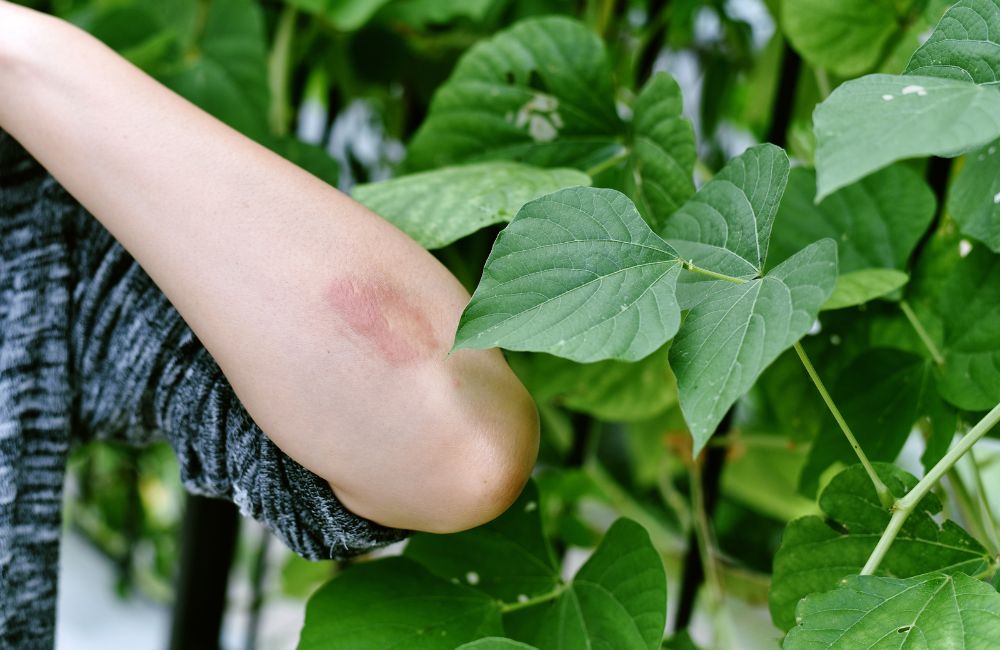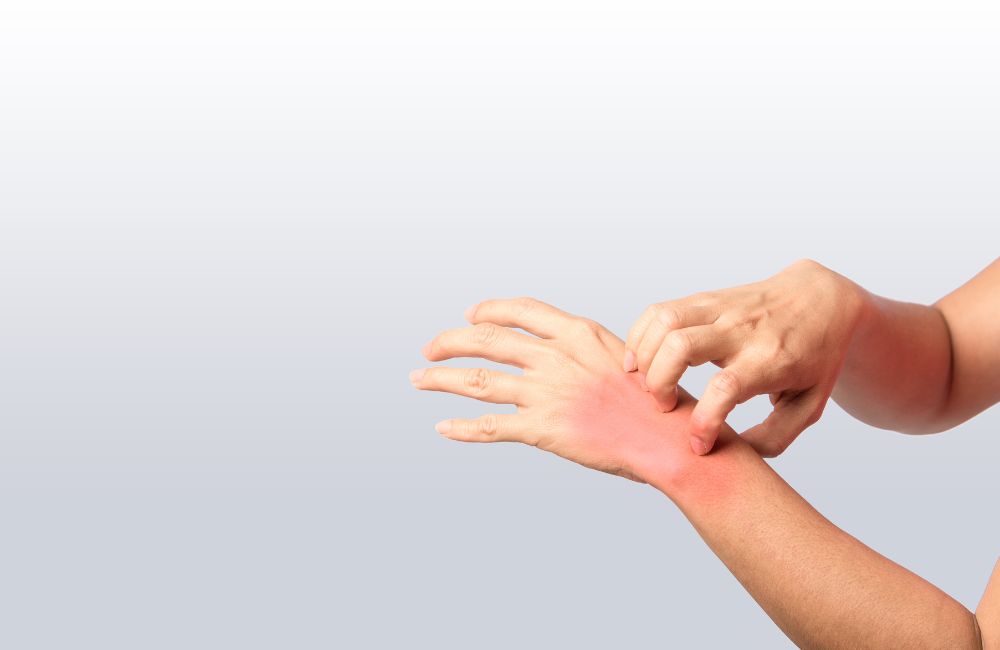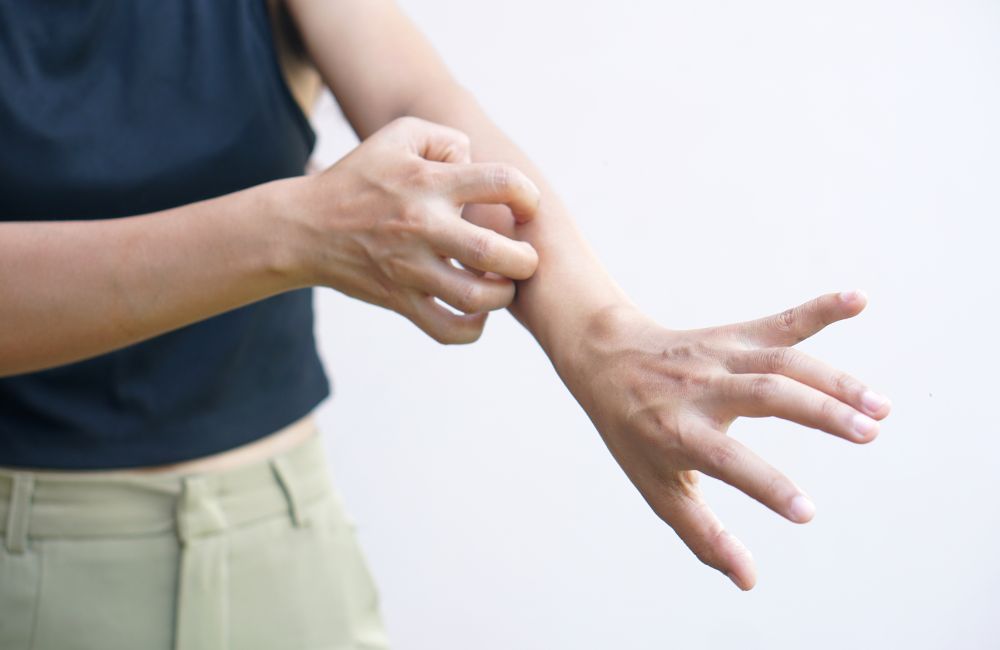
Key Takeaways
Understanding Poison Ivy Rashes
4 Immediate Steps to Take After Exposure
When to Seek a Primary Care Doctor
What to Look for in a Primary Care Doctor in Fairfield, CT
Frequently Asked Questions
Treat Poison Ivy Rashes with DOCS Urgent Care & Primary Care Fairfield, CT!
Key Takeaways
✔ Recognize the symptoms of poison ivy rashes, including red, itchy skin and blisters, to manage them effectively. ✔ After exposure, wash the area immediately, apply a cool compress, use calamine lotion, and consider over-the-counter medications for relief. ✔ Seek a primary care doctor if the rash covers a large area, is on your face or genitals, shows signs of infection, or causes breathing difficulties. ✔ Choose a primary care doctor in Fairfield, CT who offers comprehensive care, has good patient reviews, and is easily accessible for appointments. |
Poison ivy rashes can cause significant discomfort and irritation, making it essential to know how to manage them effectively. Whether you’ve had a mild brush with the plant or a more severe reaction, understanding the best practices for treatment is crucial.
Here are some expert tips on identifying, treating, and preventing poison ivy rashes, suggested by a primary care doctor in Fairfield, CT, to help you find relief and protect your skin from future exposure.
Poison ivy is a plant found in many parts of the United States. It contains an oily resin called urushiol, which can cause an allergic skin reaction upon contact. When your skin brushes against poison ivy’s leaves, stems, or roots, urushiol can transfer to your skin, clothing, or pet fur. This oil is potent and can cause a rash even if you touch a contaminated object days later.
The first step in avoiding poison ivy rashes is being able to recognize the plant. Knowing what poison ivy looks like can help you avoid it and prevent the uncomfortable and sometimes severe reactions that can follow exposure.
Identifying the symptoms of poison ivy rashes is crucial for prompt treatment. Common symptoms include:

If you suspect you’ve come into contact with poison ivy, taking immediate action is essential:
When exposed to poison ivy, washing the affected area promptly is crucial to minimize the severity of the rash. This immediate action helps remove urushiol oil, the substance responsible for the rash and reduces the risk of further spreading the irritant.
Additional Tips
When dealing with a poison ivy rash, a cool compress can significantly relieve itching and inflammation. Here are the benefits and instructions for applying a cold compress to the affected area.
A primary care doctor in Fairfield, CT, recommends using a cool compress for several reasons:
A primary care doctor in Fairfield, CT, suggests that following these steps will ensure the effective application of a cold compress:
When it comes to soothing the discomfort caused by poison ivy rashes, calamine lotion is a tried-and-true remedy. A primary care doctor in Fairfield, CT, recommends calamine lotion for its effectiveness in relieving itching and irritation. Here’s how it helps:
To maximize the benefits of calamine lotion, it’s important to apply it correctly. Here are some tips recommended by a primary care doctor in Fairfield, CT:
When dealing with a poison ivy rash, over-the-counter (OTC) medications can be highly effective in providing relief and reducing symptoms. Here are the types of OTC medications that can help and guidelines for their effective use, as recommended by a primary care doctor in Fairfield, CT.
Antihistamines are commonly used to reduce itching and inflammation caused by allergic reactions to poison ivy. They work by blocking histamines, which are chemicals your body releases during an allergic reaction.
Examples: Diphenhydramine (Benadryl), Loratadine (Claritin), Cetirizine (Zyrtec)
For optimal relief from poison ivy symptoms, follow these guidelines when using antihistamines:
Corticosteroid creams are topical treatments that help reduce inflammation, itching, and redness associated with poison ivy rashes. They are particularly useful for more severe cases with widespread or intensely itchy rash.
Examples: Hydrocortisone cream (Cortizone-10), Clobetasol (for stronger cases)
To ensure safe and effective use of corticosteroid creams, adhere to these recommendations:

Experiencing a poison ivy rash can be quite uncomfortable and, at times, severe. Knowing when to seek professional medical attention is crucial for preventing complications and ensuring proper treatment. While mild poison ivy rashes can often be managed at home, there are specific signs that indicate you should see a primary care doctor in Fairfield, CT:
Ignoring severe poison ivy rashes can lead to several complications. A primary care doctor in Fairfield, CT can help prevent these issues:
Choosing a primary care doctor is an important decision that can significantly impact your overall health and well-being. Here are some key factors to consider when searching for a primary care doctor in Fairfield, CT.
When selecting a primary care doctor in Fairfield, CT, it’s essential to review their qualifications and experience. Look for doctors who are board-certified in their specialty, indicating they have met rigorous standards of education, knowledge, and practice. Additionally, consider their years of experience and whether they have expertise in treating any specific health conditions you may have.
One of the best ways to gauge the quality of a primary care doctor in Fairfield, CT, is to read patient reviews and seek recommendations from friends, family, or other healthcare providers. Patient reviews can provide insights into the doctor’s bedside manner, the efficiency of the office staff, and overall patient satisfaction.
Accessibility is another critical factor when choosing a primary care doctor in Fairfield, CT. Consider the location of the doctor’s office, their office hours, and the ease of scheduling appointments. A conveniently located office with flexible hours can make it easier to keep regular appointments and manage your health effectively.
A good primary care doctor in Fairfield, CT, should have a communication style that makes you feel comfortable and understood. During your initial consultation, observe whether the doctor listens to your concerns, explains medical terms clearly, and takes the time to answer your questions. Effective communication is key to building a trusting doctor-patient relationship.
Before committing to a primary care doctor in Fairfield, CT, check whether they accept your health insurance plan. Understanding the payment options and any out-of-pocket costs can prevent unexpected expenses. Contact the doctor’s office to confirm they are in-network with your insurance provider and to discuss any financial concerns you may have.
Knowing the hospital affiliations of your primary care doctor in Fairfield, CT, can be important, especially if you require specialized care or hospitalization. Doctors affiliated with reputable hospitals can facilitate smoother referrals and continuity of care if you need to see specialists or require hospital-based services.
You can schedule an appointment by calling the clinic, using the online appointment scheduling system, or through a patient portal if available.
A primary care doctor can help manage chronic conditions such as diabetes, hypertension, and asthma through ongoing monitoring and treatment plans.
A poison ivy rash usually lasts about 1 to 3 weeks, with the severity and duration varying based on individual reactions and treatment effectiveness.
The rash itself is not contagious, but the urushiol oil that causes the rash can be spread through contact with contaminated clothing, tools, or pets.
Inhaling smoke from burning poison ivy can cause severe respiratory issues. If this occurs, seek immediate medical attention from a primary care doctor in Fairfield, CT or go to an emergency room.

Are you struggling with poison ivy rashes? Visit DOCS Urgent Care & Primary Care Fairfield, CT, for expert care and relief. Our experienced primary care doctors in Fairfield, CT provide effective treatments to alleviate the itching and discomfort caused by poison ivy. Don’t let the rash worsen – schedule an appointment today with DOCS Urgent Care & Primary Care Fairfield for prompt and professional medical attention!



During this surge in COVID-19 cases, our primary focus is meeting the high demand for tests, and we are seeing higher than usual wait times. This means we are unable to answer most phone calls. Please know that our teams are working very hard during this time to care for as many patients as safely as possible. Please click the button below for answers to common questions. We appreciate your understanding.